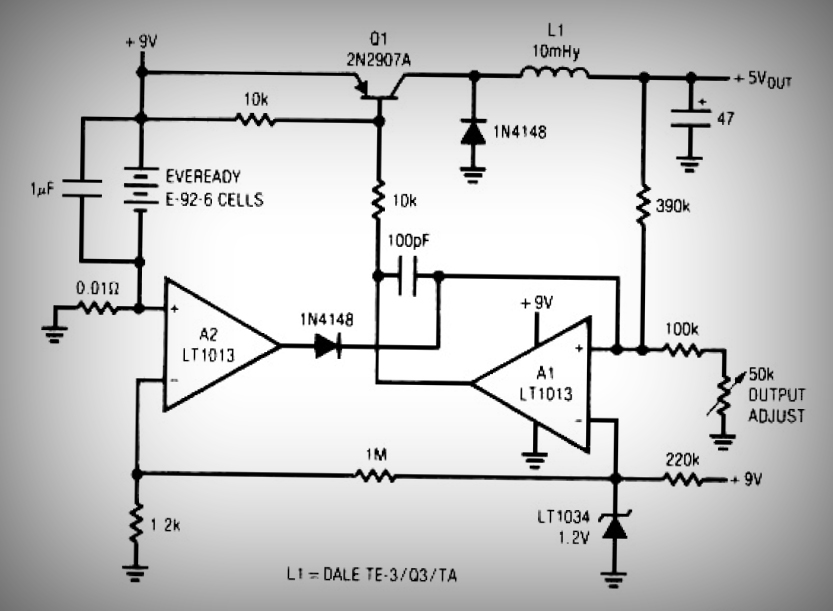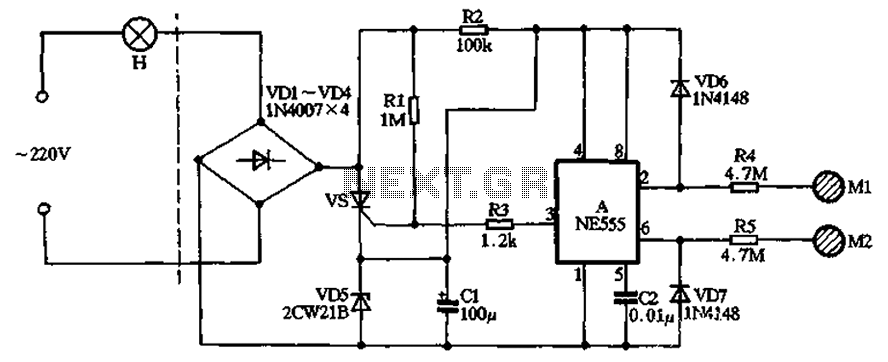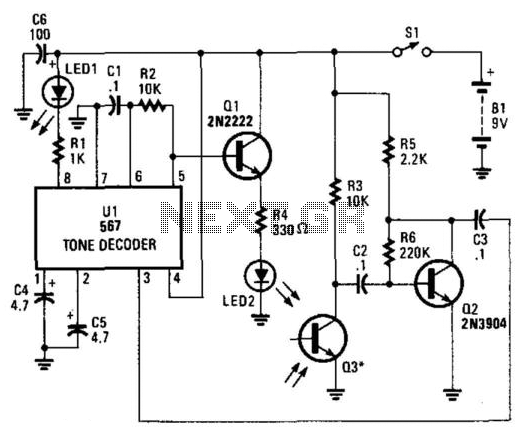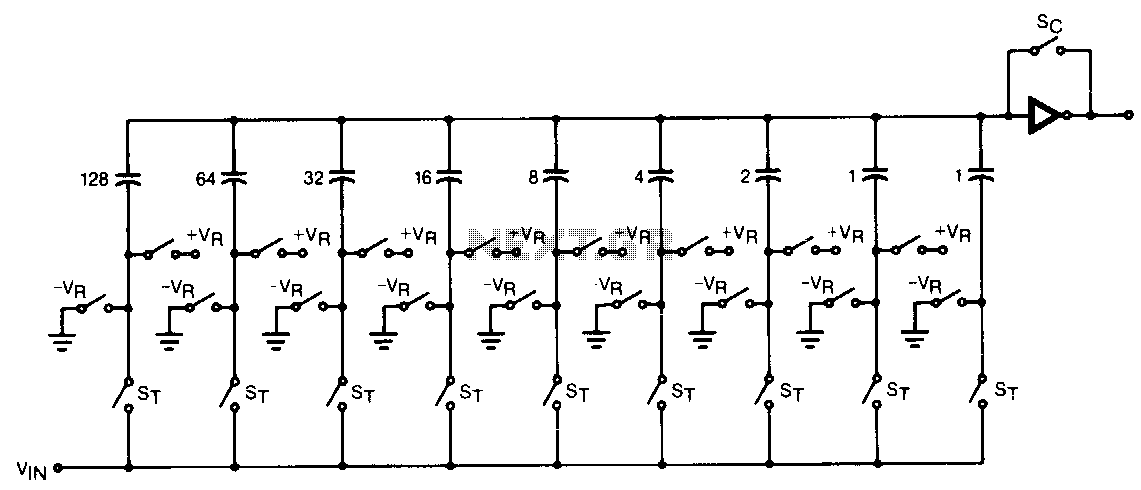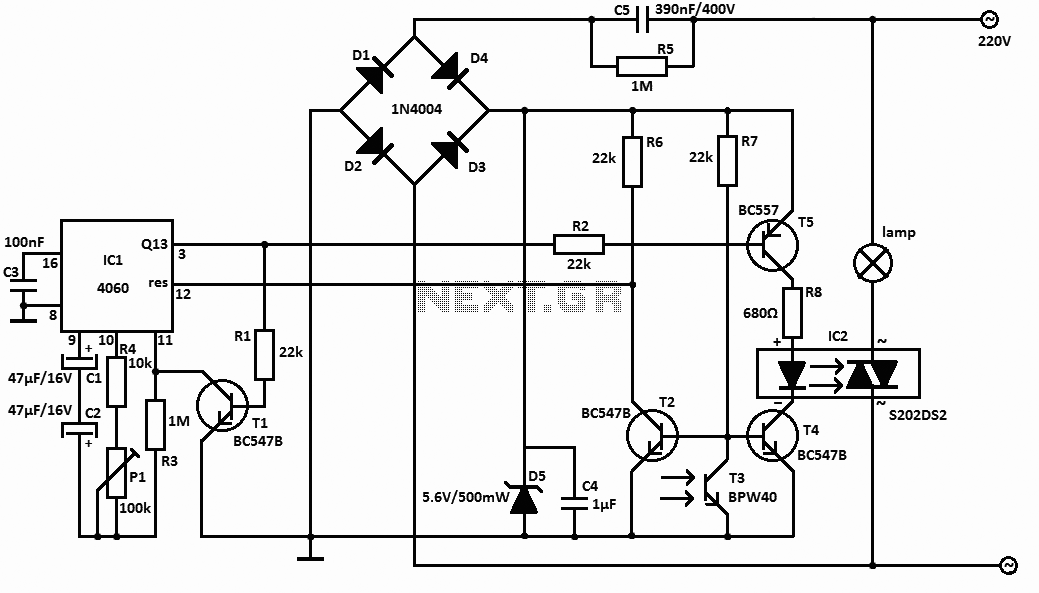
Laser Controlled ON - OFF Switch

This circuit is designed around a 555 timer and utilizes a minimal number of components. Due to its simplicity, it can be easily constructed and operated by beginners.
The circuit leverages the 555 timer IC, which is a versatile and widely used component in various electronic applications. The 555 timer can be configured in different modes, such as astable, monostable, and bistable. In this particular design, it is likely configured in astable mode, allowing it to function as an oscillator that generates a square wave output.
The basic components required for this circuit typically include the 555 timer IC, resistors, capacitors, and a power supply. The resistors set the charge and discharge times of the timing capacitor, which ultimately determines the frequency and duty cycle of the output waveform. The capacitor is charged and discharged through the resistors, creating the oscillating behavior characteristic of the astable configuration.
In practical applications, this circuit can be used for generating clock pulses, LED flashers, or tone generation in audio circuits. The output from the 555 timer can drive other components, such as transistors or relays, allowing for further control of larger loads or more complex functions.
The design's simplicity makes it an excellent project for educational purposes, as it provides insight into the operation of timers and oscillators in electronic circuits. Additionally, variations of this circuit can be explored by adjusting component values or configurations, leading to a deeper understanding of frequency modulation and timing applications in electronics.This circuit is built around a 555 timer using very few components. Since the circuit is very simple, even a novice can easily build it and use it as a co.. 🔗 External reference
The circuit leverages the 555 timer IC, which is a versatile and widely used component in various electronic applications. The 555 timer can be configured in different modes, such as astable, monostable, and bistable. In this particular design, it is likely configured in astable mode, allowing it to function as an oscillator that generates a square wave output.
The basic components required for this circuit typically include the 555 timer IC, resistors, capacitors, and a power supply. The resistors set the charge and discharge times of the timing capacitor, which ultimately determines the frequency and duty cycle of the output waveform. The capacitor is charged and discharged through the resistors, creating the oscillating behavior characteristic of the astable configuration.
In practical applications, this circuit can be used for generating clock pulses, LED flashers, or tone generation in audio circuits. The output from the 555 timer can drive other components, such as transistors or relays, allowing for further control of larger loads or more complex functions.
The design's simplicity makes it an excellent project for educational purposes, as it provides insight into the operation of timers and oscillators in electronic circuits. Additionally, variations of this circuit can be explored by adjusting component values or configurations, leading to a deeper understanding of frequency modulation and timing applications in electronics.This circuit is built around a 555 timer using very few components. Since the circuit is very simple, even a novice can easily build it and use it as a co.. 🔗 External reference
